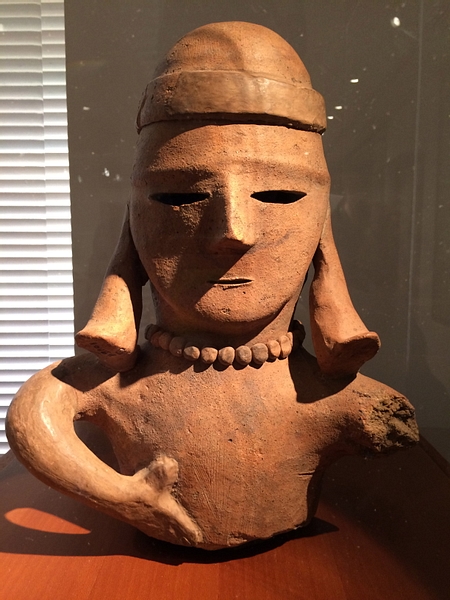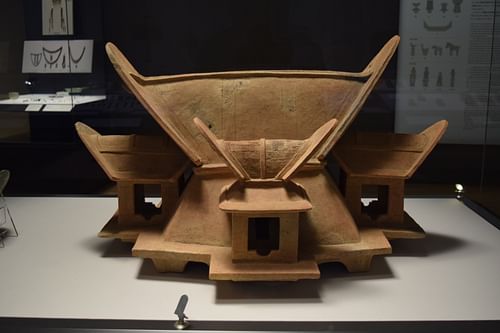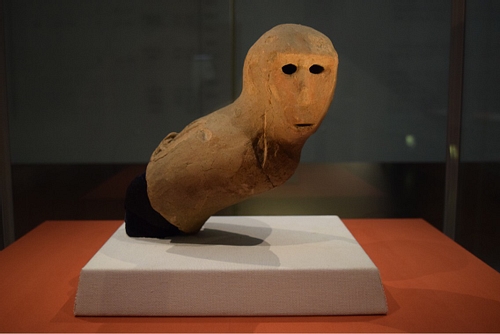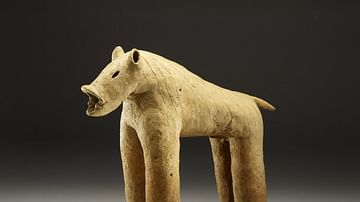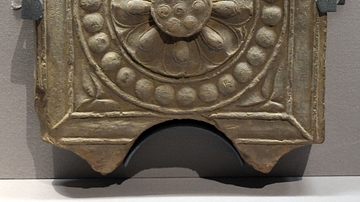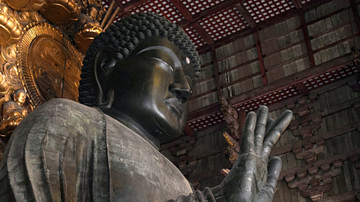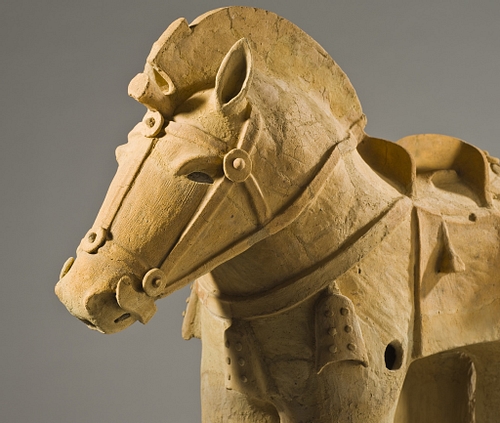
Haniwa are the unglazed terracotta rings, cylinders, and figures of people, animals, and houses which were deposited at Japanese tombs during the Kofun and Asuka Periods (c. 250-710 CE). The exact purpose of these offerings is not known, although it seems likely they were examples of conspicuous consumption of the societal elite or performed some protective function. Many haniwa are particularly detailed in their execution and thus provide a valuable insight into the culture of the period. Standing over one metre in height, the mysterious figures are a striking example of early Japanese sculpture.
Purpose
These ritual objects were buried with the deceased interred in kofun (tumuli) tombs throughout the Yamato Period of ancient Japan from the 3rd century CE to the early 8th century CE. The period is often subdivided into the Kofun Period (c. 250-538 CE) and the Asuka Period (538-710 CE). Early tombs were more modest, but by the 5th century CE, they had developed into huge earth mounds. The practice spread throughout Japan so that the islands boast some 20,000 burial mounds known today. They follow a similar design with a keyhole-shaped inner tomb covered by an earth mound and surrounded by a moat. The biggest is the tomb of Emperor Nintoku which is 823 metres long. The earliest examples of haniwa discovered are concentrated in the Nara region. Unusually for votive offerings, haniwa were not placed within the tomb itself but near it or on top of it in either a circle or rows.
The precise significance of these offerings is unclear, but in all probability, they substituted real objects and displayed the wealth and status of the individual interred in the large tumuli which were themselves reserved for the society's elite, such was the labour needed to build them. The Nihon Shoki ('Chronicle of Japan' and also known as the Nihongi), written in 720 CE, suggests that haniwa were replacements for the chieftain's attendants, it being a common feature of ancient societies to bury the slaves of a ruler with their master. This does not, however, explain those haniwa which are simply rings or cylinders, which constitutes the majority. Although it may be that the cylinders were originally meant as stands for the more elaborate figures.
Another theory is that haniwa acted as protective spirits for the deceased and ensured the tomb was not disturbed. Certainly, Korean tumuli in the contemporary Silla kingdom, which may well have influenced Japanese culture, employed stone sculptures of animal signs for just that purpose. Finally, the haniwa may have protected not the dead but the living from the spirit of the deceased chief, ancestor worship and a reverence for spirits or kami being long-held beliefs in ancient Japan.
Shapes & Forms
The name haniwa means 'clay ring' but the coarse red terracotta objects today given that label represent a wide range of figurines of people and animals, and besides the simpler ring types and common cylinder forms, there are also representations of houses, fishing boats, and trading ships. Amongst the most intricate haniwa are human figures representing female shamans with elaborate headdresses or holding a mirror, helmeted warriors wearing armour, horseriding warriors with bows and arrows, women carrying babies on their backs or water vessels on their heads, farmers wielding hoes, musicians playing a drum or zither, and falconers with their hawk. Another common type is riderless horses with intricate saddles and bridles. Other animals include birds, dogs, deer, monkeys, rabbits, and sheep. Most haniwa are just under one metre in height but some are over 1.5 metres tall.
This content was made possible with generous support from the Great Britain Sasakawa Foundation.
